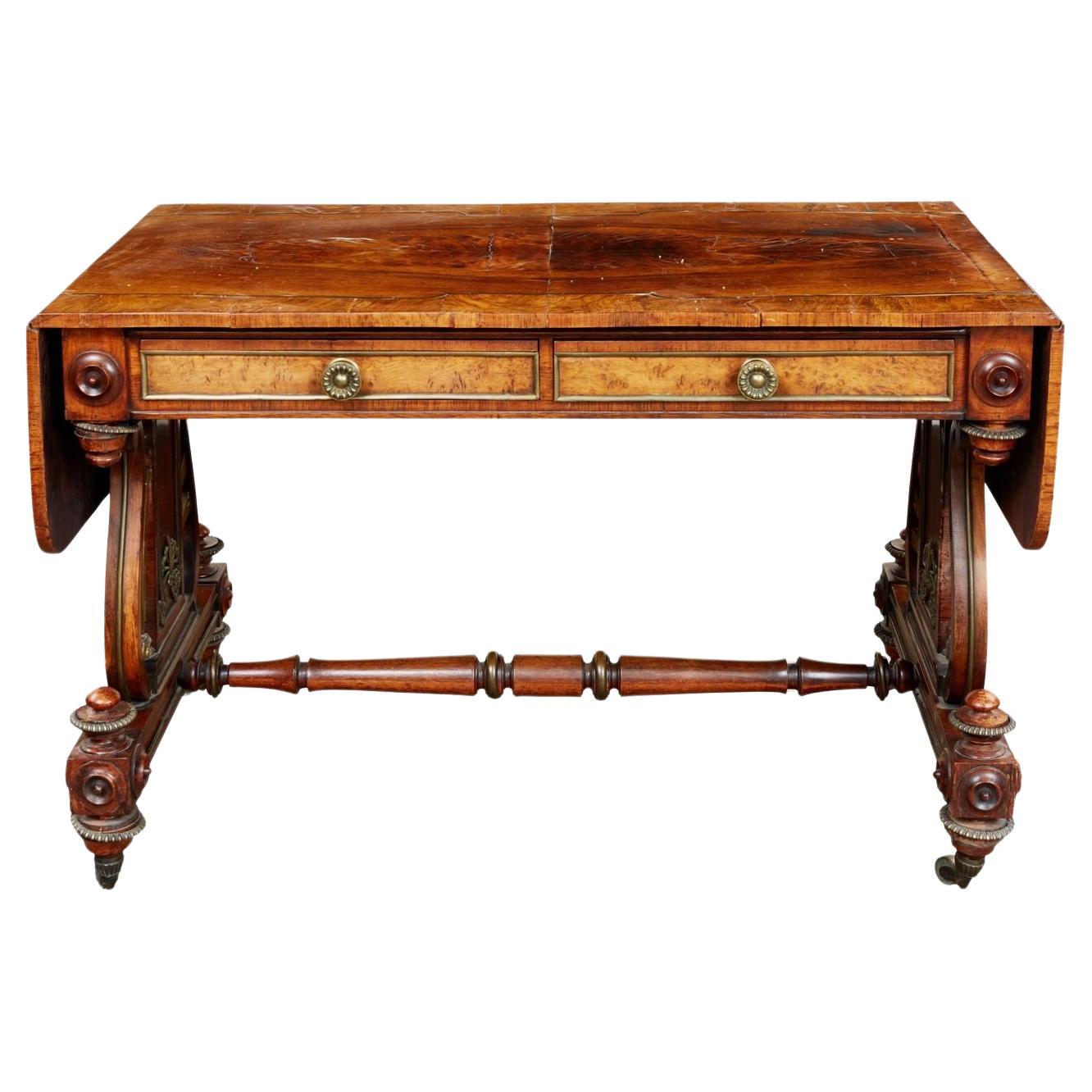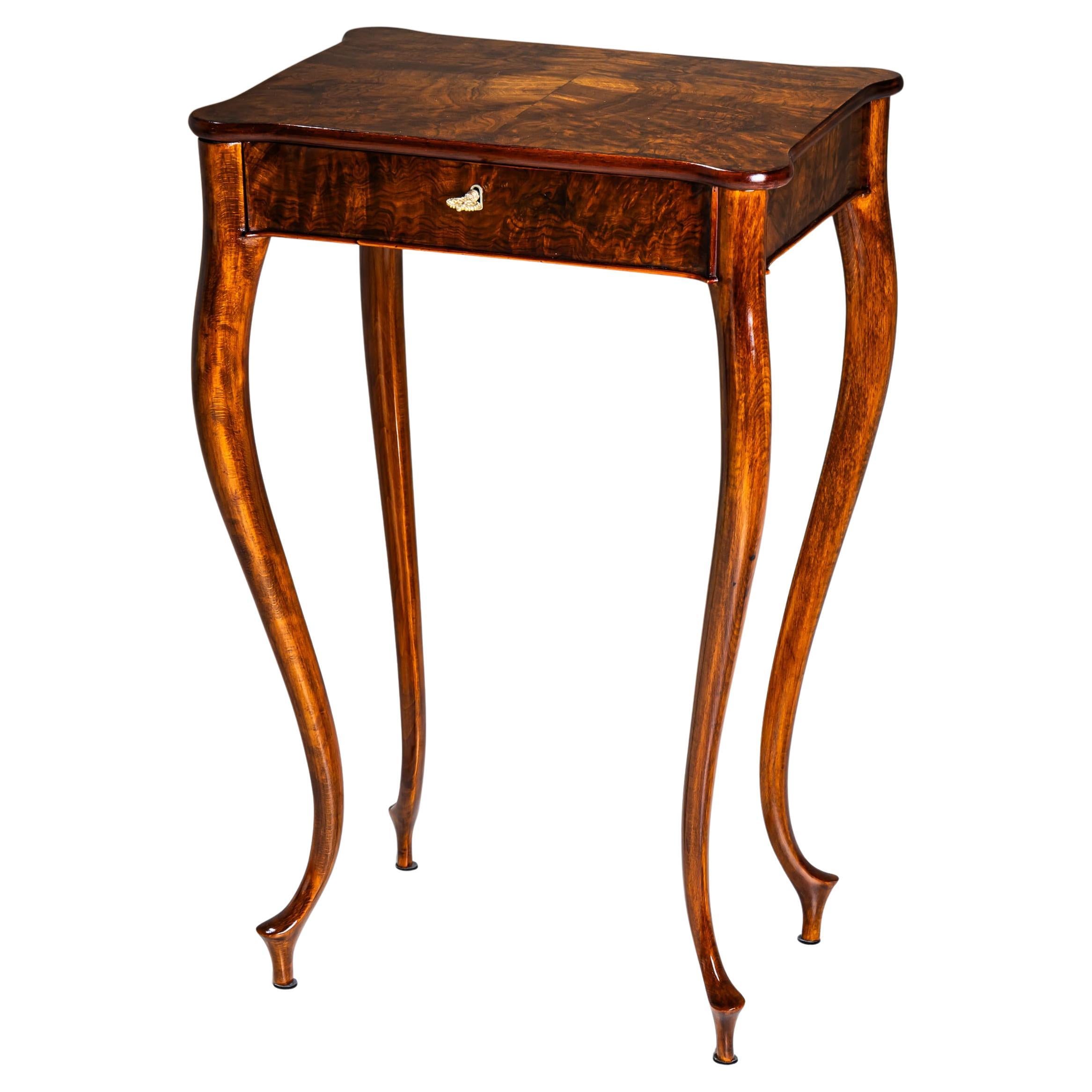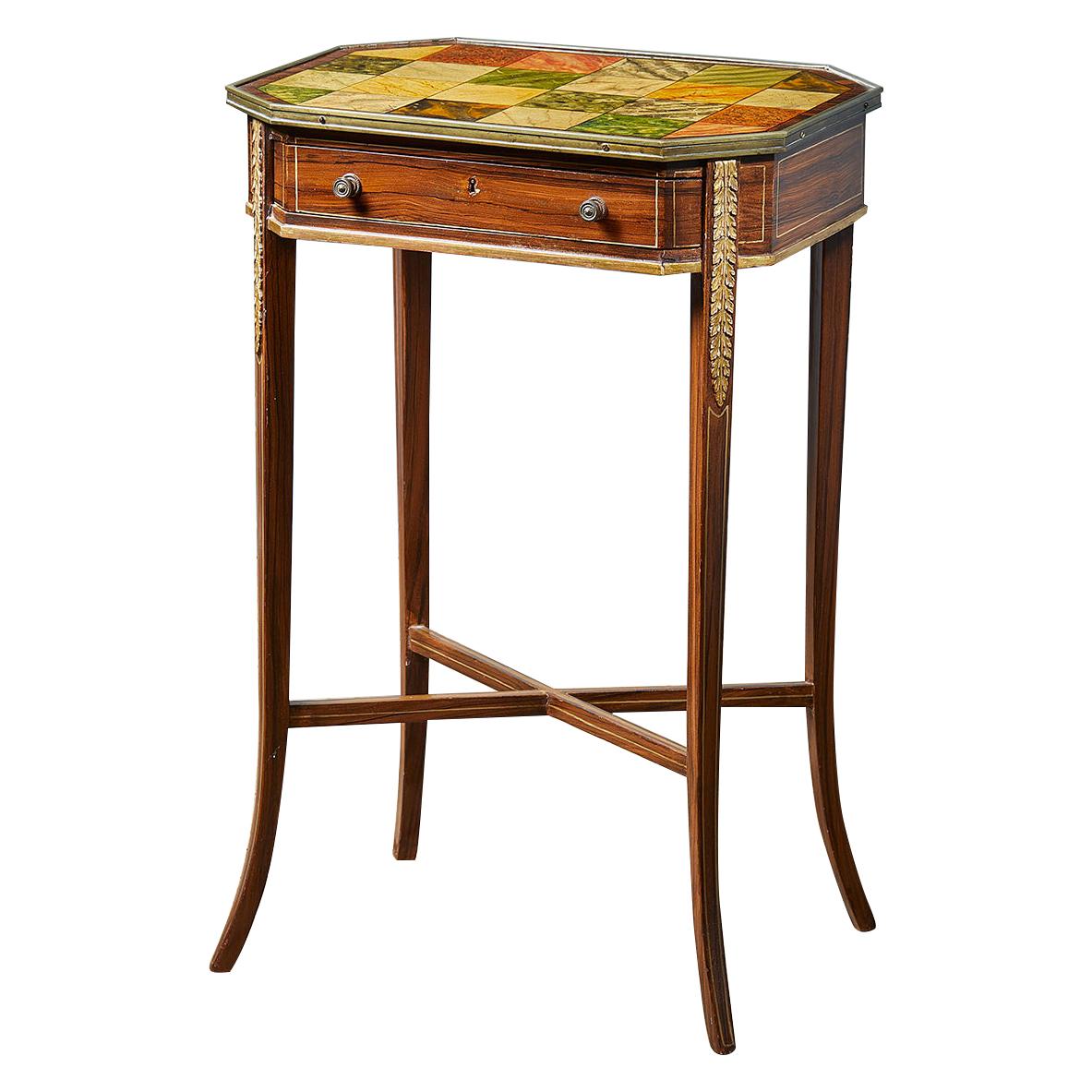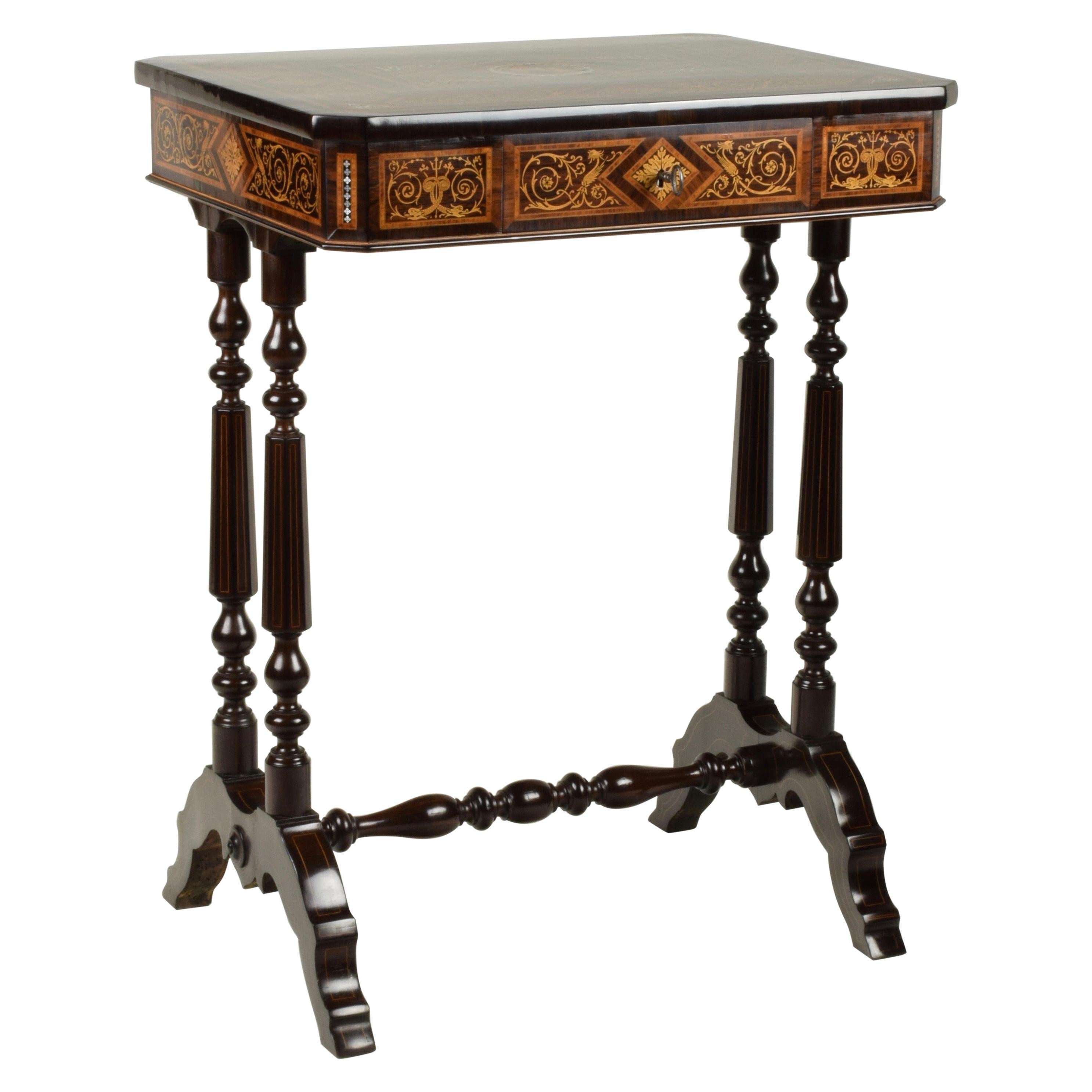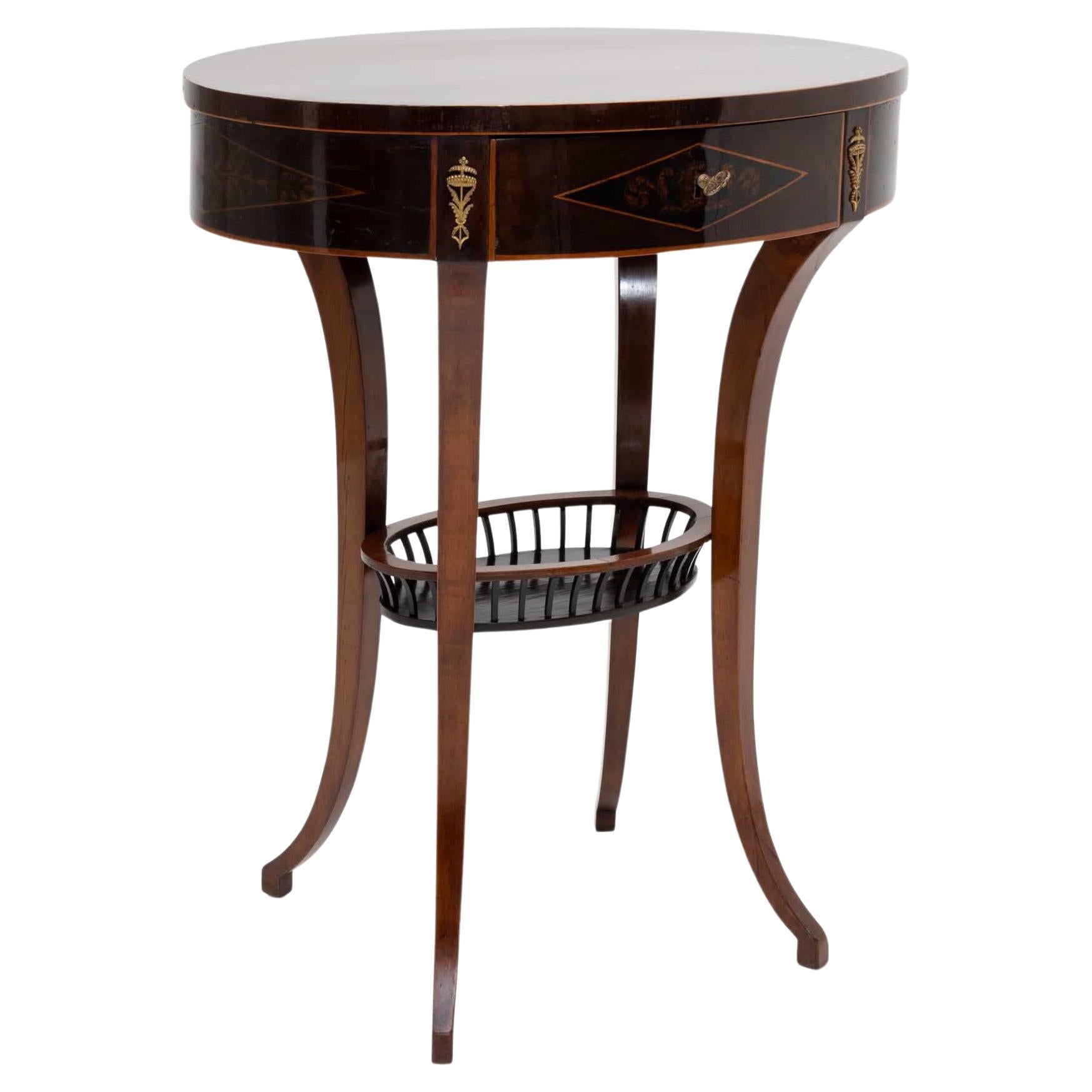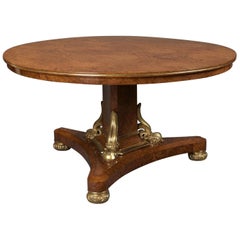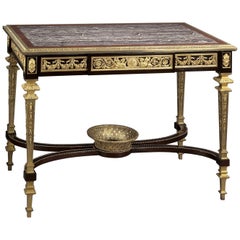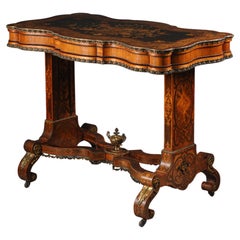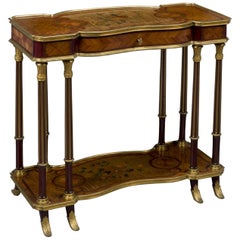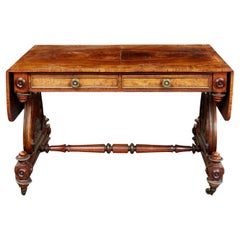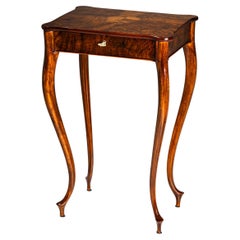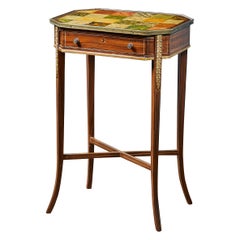Items Similar to Work Table in the Manner of Gillows, English, circa 1820
Want more images or videos?
Request additional images or videos from the seller
1 of 7
Work Table in the Manner of Gillows, English, circa 1820
$7,448.23
£5,500
€6,445.83
CA$10,271.43
A$11,539.49
CHF 6,029.40
MX$140,844.90
NOK 76,555.80
SEK 72,061.16
DKK 48,101.15
About the Item
A work table in the manner of Gillows.
The hinged lobed sarcophagus compartment enclosing a tray and compartments.
Gillows
The name Gillows has been associated with the craft of furniture-making since the reign of George II. Gillows furniture is prized for its well chosen timbers and fine quality of craftsmanship. Furniture produced in the latter part of the 18th century shows a prediliection for elegant forms, while finely figured mahogany and robust design characterize furniture of the early 19th century. The history of Gillows, from the early 18th century to the early twentieth, encapsulates the history of English furniture and its manufacture.
Gillows was established circa 1730 by Robert Gillow some 20 years before Thomas Chippendale, and was one of the most renowned British cabinet making firms. They developed first a national and then an international reputation as a supplier of quality furniture to the upper middle classes, the landed gentry, and the aristocracy. The company won commissions to furnish and decorate public buildings in Australia, South Africa, India, Russia, Germany, France and the U.S., and it also executed Pugin’s designs for London’s Palace of Westminster from 1840 onwards.
If Gillows is less of a household name than Chippendale, Sheraton or Hepplewhite, it is because the firm kept its pattern books, the Estimate Sketch Books, a closely guarded secret, for craftsmen and customers only. They boasted the widest stock outside London, and, uniquely for a provincial company in the eighteenth century, had workshops and showrooms in the capital on Oxford Street.
They often worked in conjunction with other cabinet making firms on large domestic furnishing commissions, such as Denton Hall, Otley where they worked alongside Thomas Chippendale during the late 1770s, and Wokington Hall, Cumbria, from which examples of the furniture are at the Abbot Hall Museum, Kendal.
In the 19th century Gillows were involved in several celebrated projects, most notably the furnishing of the Palace of Westminster throughout the 1850s and 1860s, for which they worked from Pugin designs; and the 'Pet Sideboard' to designs by the ubiquitous Bruce Talbert which won first prize at the London Exhibition of 1872. This sideboard was bought by the Victoria & Albert Museum, and is illustrated in Simon Jervis 'Victorian Furniture', p.59, pl63.
Gillow of Lancaster, also reputedly invented the Davenport for a Captain Davenport in the 1790s.
English, circa 1820.
- Similar to:Gillows of Lancaster & London (Maker)
- Dimensions:Height: 29.14 in (74 cm)Width: 20.08 in (51 cm)Depth: 15.75 in (40 cm)
- Materials and Techniques:
- Place of Origin:
- Period:
- Date of Manufacture:circa 1820
- Condition:Wear consistent with age and use.
- Seller Location:Brighton, GB
- Reference Number:Seller: B300271stDibs: LU1028018072671
About the Seller
5.0
Recognized Seller
These prestigious sellers are industry leaders and represent the highest echelon for item quality and design.
Established in 1964
1stDibs seller since 2014
58 sales on 1stDibs
Typical response time: <1 hour
Associations
The British Antique Dealers' AssociationLAPADA - The Association of Arts & Antiques Dealers
- ShippingRetrieving quote...Shipping from: Brighton, United Kingdom
- Return Policy
Authenticity Guarantee
In the unlikely event there’s an issue with an item’s authenticity, contact us within 1 year for a full refund. DetailsMoney-Back Guarantee
If your item is not as described, is damaged in transit, or does not arrive, contact us within 7 days for a full refund. Details24-Hour Cancellation
You have a 24-hour grace period in which to reconsider your purchase, with no questions asked.Vetted Professional Sellers
Our world-class sellers must adhere to strict standards for service and quality, maintaining the integrity of our listings.Price-Match Guarantee
If you find that a seller listed the same item for a lower price elsewhere, we’ll match it.Trusted Global Delivery
Our best-in-class carrier network provides specialized shipping options worldwide, including custom delivery.More From This Seller
View AllGeorge IV Centre Table Attributed to Thomas & George Seddon, circa 1830
By Thomas & George Seddon
Located in Brighton, West Sussex
A Very Fine George IV Parcel-Gilt Amboyna Centre Table Attributed to Thomas & George Seddon.
English, Circa 1830.
The table is of finely figured Amboyna with a circular tilt-top above a triform column with parcel-gilt scrolled supports. It is raised on a conforming plinth base with foliate carved feet and concealed castors.
George Seddon was the eighth child of John Seddon of Blakelea, Lancashire. His father apprenticed him to George Clemaphon of Cripplegate to learn cabinet making. He became a master cabinet maker. (He was Master of the Joiner’s Company in 1795).
In the early 1750s he was sufficiently successful to acquire London House, Aldersgate Street. It consisted of extensive workshops, where furniture was made, and showrooms to display the finished products. London House had formerly been a palace of the Bishops of London. The panelled state-rooms were ideal for the display of fashionable furniture; and the chapel and library made convenient workshops. When Seddon married, he converted the garden house and infirmary into the family home. Seddon was the biggest furniture maker of his time. His furniture store covered a two acre site in Aldersgate Street.
His workshop there was described by London visitor Sophie v. La Roche in 1786:
"We drove first to Mr. Seddon's, a cabinet-maker,...He employs four hundred apprentices on any work connected with the making of household furniture—joiners, carvers, gilders...
Category
Antique Early 19th Century English George IV Center Tables
Materials
Wood
Louis XVI Style Centre Table in the Manner of Adam Weisweiler, circa 1890
By Adam Weisweiler
Located in Brighton, West Sussex
An exceptional Louis XVI style gilt-bronze mounted centre table in the manner of Adam Weisweiler, with a rare amethyst quartz marble top.
French, cir...
Category
Antique Late 19th Century French Louis XVI Center Tables
Materials
Marble, Bronze
Rare and Unusual Victorian Gilt-Bronze and Marquetry Metamorphic Table
Located in Brighton, West Sussex
A rare and unusual Victorian gilt-bronze and marquetry metamorphic table.
The serpentine shaped top with beautiful marquetry in precious woods depicting a flower-filled basket att...
Category
Antique 19th Century French Victorian Dessert Tables and Tilt-top Tables
Materials
Wood
Transitional Style Low Side Table, Attributed to Maison Krieger, circa 1880
By Maison Krieger
Located in Brighton, West Sussex
An unusual transitional style gilt bronze mounted low side table, attributed to Maison Krieger.
French, circa 1880.
This unusual table has a shaped top centred by an inlaid f...
Category
Antique Late 19th Century French Louis XVI Tables
Materials
Bronze
Louis XV Style Table Ambulante Attributed to François Linke, circa 1880
By François Linke
Located in Brighton, West Sussex
A Louis XV style marble and gilt-bronze mounted table Ambulante attributed to François Linke.
French, circa 1880.
A Louis XV style marble and gilt-bronze mounted table Ambulant...
Category
Antique Late 19th Century French Louis XV Side Tables
Materials
Marble, Bronze
A Biedermeier Satin Birch Occasional Table
Located in Brighton, West Sussex
A Biedermeier Satin Birch Occasional Table.
The canted rectangular top above a frieze drawer and sides with lion mask handles, on swept legs joined by an 'X'-shaped stretcher.
Aust...
Category
Antique 19th Century Austrian Biedermeier Side Tables
Materials
Birch
You May Also Like
Regency Sofa Table in the Manner of George Bullock
By George Bullock
Located in Greenwich, CT
A spectacular sofa table in the manner of George Bullock with intimations of designs by Thomas Hope having a rosewood veneered top banded in oak with brass inlaid florets at the corn...
Category
Antique 1820s English Sofa Tables
Materials
Rosewood
Sewing Table, Late 19th Century
Located in Greding, DE
Delicate sewing table standing on slender, elegantly curved legs, crafted from finely polished walnut with beautiful veneer grain. The shaped top opens to reveal a meticulously organ...
Category
Antique Late 19th Century German Louis Philippe Side Tables
Materials
Walnut
Late 18th Century Regency Occasional Table
Located in Petworth, West Sussex
A Regency period occasional table painted to simulate marbles and rosewood, English circa 1790-1810, the canted rectangular top painted in a variety of colors with twenty-four panels...
Category
Antique Late 18th Century British Regency Side Tables
Materials
Bronze
$3,195 Sale Price
20% Off
19th Century Regency Period Sofa Table
Located in Brighton, Sussex
A good quality, elegant Regency period mahogany sofa table, having unusual Coromandel crossbanding to the top, two crossbanded mahogany lined frieze drawers, two end supports with th...
Category
Antique Early 19th Century English Regency Sofa Tables
Materials
Mahogany
Work Table, Florentine Cabinetry, circa 1850
By Fratelli Falcini
Located in Prato, IT
This table is characterized by the high quality of the decoration, a dense but orderly inlay, evident in the absolute precision in cutting and combination of the various materials (p...
Category
Antique Mid-19th Century Italian Other Tables
Materials
Mother-of-Pearl, Boxwood, Cherry, Ebony, Maple, Palisander, Rosewood
Empire Sewing Table, Austria Circa 1810
Located in New York, NY
Empire sewing table with socketed saber legs and a basket tray, adorned with an oval frame featuring fire-gilded fittings. The table includes a lockable drawer with diamond-shaped fi...
Category
Antique 1810s Austrian Empire Tables
Materials
Brass
More Ways To Browse
India Rosewood
Captains Table
English 18th Century Mahogany Side Table
Palace Of Westminster
Antique Side Table India
Victorian Rosewood Side Tables
Oxford Side Table
Used Furniture Cumbria
Rosewood Chippendale
Gillows Davenport
Used Furniture Denton
French Provincial Rosewood
African Mahogany Sideboard
Rosewood Side Tables With Inlay
Vintage Elephant Side Table
Volcanic Rock Tables
Baker Burl Table
Midcentury Sewing Table
